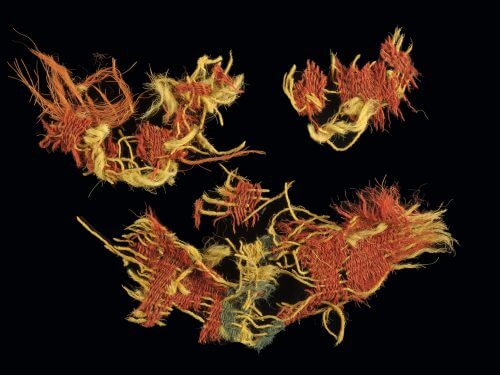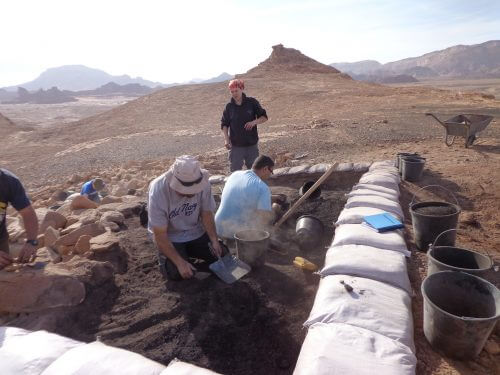In a joint study by the Antiquities Authority, Tel Aviv University and Bar Ilan University, the dyes used to dye Timna textiles from the time of Kings David and Solomon were discovered. This is the earliest find in the country, where remains of paint originating from plants were found. According to the researchers, it seems that the metalsmiths were the ones who got to wear colorful clothes, as a sign of their high status

Evidence of the use of dyeing plants in textiles from the time of Kings David and King Solomon was uncovered. This was published today in the prestigious magazine PLOS ONE, under the leadership of Dr. Naama Soknik from the Antiquities Authority and Dr. Erez Ben Yosef from Tel Aviv University, and in collaboration with a team of researchers from Tel Aviv University, Bar Ilan University and the Antiquities Authority.
In excavations conducted in the Timna Valley under the leadership of Dr. Erez Ben Yosef from Tel Aviv University since 2013, dozens of pieces of 3,000-year-old textiles were found, which were preserved thanks to the dry and extreme climate that prevails in the area. The textiles date from the Iron Age (12th - 10th centuries BC), during the reigns of David and Solomon, and are partly decorated with a pattern of stripes in red and blue tones.
This is the earliest find in which remains of paint originating from plants (colors) were found in Israel and the Levant (ancient Middle East). The identification of the dyes is done with the help of advanced analytical equipment (HPLC) in the laboratories of Bar-Ilan University. The analysis of the data indicated the use of two main plants: the color hair, with the help of whose roots they obtained the red shade, and the substance indigotin - which probably originates from the colors istis, and with the help of which they obtained the blue shade, in a long and complex process that in the past lasted several days. These two plants, which are among the most prominent dyeing plants in the ancient world, are closely related to the dyeing industry. They were grown in the past in the Land of Israel especially for the dyeing industry, and were used until the discoveries of synthetic dyes. The fabrics from Tamina were dyed with real dyeing, which is characterized by a chemical bond between the dye and the fiber, a fact that indicates professional knowledge and artistry in dyeing already in this period.

The discovery of woolen textiles decorated with color surprised the researchers since Timna during the Iron Age was mainly used as a central site for the production of copper and included smelting and mining sites. According to Dr. Erez Ben Yosef from Tel Aviv University and Dr. Naama Soknik from the Antiquities Authority, "the findings indicate that the society in Timna, which is identified in this period with the Kingdom of Edom, was stratified, and included a high class that had access to the colorful and prestigious textiles. The context of the find of the textiles implies that the metal potters, entrusted with the operation of the smelting furnaces, were also among the members of this class.
The craft of turning the stone into copper required great skill. It was one of the most knowledgeable trades of the ancient world, and it seems that the metal potters were given special treatment among the society in which they worked, and wore clothes decorated with color. In this sense, it is a real innovation, because the findings stand in contrast to the previous research concept according to which slaves would operate the furnaces in the heart of the desert. This rare find, of 3000-year-old colored textiles, provides an extraordinary opportunity to examine intriguing questions in research, including: stratification and social organization, economic status of the local population, trade relations, technological capabilities, and more.
The rare 3000-year-old textiles are kept today in the organic warehouse at the Antiquities Authority, under strict climate control.
Research partners: Dr. Naama Soknik, Dr. Erez Ben Yosef, Dr. David Iloz, Dr. Alexander Warvak, Prof. Zohar Amr, Ms. Vanessa Workman and Dr. Orit Shamir.
